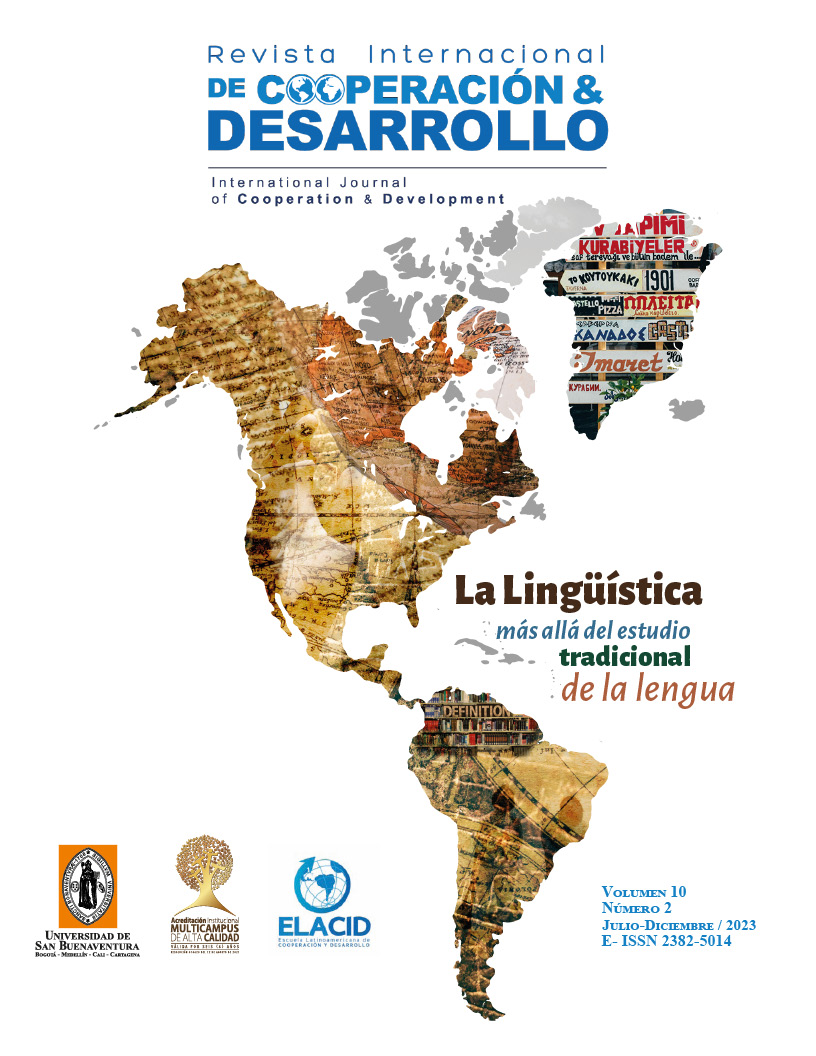INTERNATIONAL JOURNAL OF COOPERATION AND DEVELOPMENT
Assignment of Rights
Authorization for reproduction, publication, communication and distribution of a literary, artistic or scientific
Work.
I , ____________________________________________, author of the book and / or article , of legal age , resident of the city of _________________ , identified with citizenship / passport n° ______________________ issued on _______________________, in exercise of his physical and mental faculties , part henceforth be called the AUTHOR , supports the following authorization to the reproduction, publication, communication and distribution of a work, perform the following terms:
1. Regardless of current legal regulations due to the linking of the parties to this contract, and any kind of legal presumption , the parties agree that the AUTHOR authorize ( name of the publisher ) to reproduce , publish , communicate and distribute the material referred to in the International Journal of Cooperation and Development of the University of San Buenaventura.
2. Such authorization lies in particular on the copyright of the work, by any means known or unknown, publication of the work, distribution of the work , either directly or through third parties for purely educational purposes.
3. AUTHOR agrees to report and declare the existence of this authorization and to preserve the right of the International Journal of Cooperation and Development of the first publication of the work.
4. AUTHOR declares that the article is original and that it is his sole creation, no impediment of any kind exist for the authorization he is doing, besides being responsible for any action claim, plagiarism or other type of claim that might arise about .
5. Such permission is free of charge.
6. Moral copyright in the article are solely the AUTHOR and the University of San Buenaventura expressly agrees to recognize and respect them rigorously.
The Author and / or AUTHORS
SIGNATURE
Abstract
This article reviews the perception and production of the corporeal and imitative sound symbolism in an educational institution in Bogota. The first type of sound symbolism is considered as the result of using the ability to express an emotional or physical state through sounds classified, in general terms, as the category of interjections. The imitative sound symbolism is the outcome of the production of onomatopoeic words whose meaning represents different similarity degrees of ambient sound. Data were obtained by means of writing production surveys and perception tests applied to 124 male and female adolescents from high school levels, especially, ninth, tenth and eleventh grade students. The results were analyzed through descriptive statistics measurements with Student's t and Fisher tests. It was found that the most influential language in the use of unduplicated forms in corporeal sound symbolism is English, particularly, in production tests. In Spanish, there is a greater use of monosyllables to produce and perceive representations of feelings and sensations. The results in the category of imitative sound symbolism showed that the majority of men prefer the use of unduplicated forms, while women tend to use the monosyllable quite often, both in English and Spanish. This shows that social variables are of great importance due to these showed significant contrasts in this study.
Keywords:
References
Akita, K. (2020). Japanese Ideophones from a Typological Perspective. Kobe papers in linguistics, 12, 1-11.
Ballester, X. (2007). Moix y otros étimos hespéricos. En E. Casanova i Herrero y X. Terrado i Pablo (Eds.), Studia in honorem Joan Coromines (pp. 299-316). Pagès Editors. https://n9.cl/ii0lc
Bernardi, L. (2014). Interjecciones, onomatopeyas y ¿sonidos inarticulados? Una reflexión desde la perspectiva de categorización cognitiva. Scripta, 18(34), 41-62.
Buendía, B. (2018). Interjecciones presentes en la traducción de una historieta del francés al español [Trabajo de grado. Universidad César Vallejo]. Repositorio UCV. https://n9.cl/4jwi0
Chan, M. (1996). Some thoughts on the typology of sound symbolism and the Chinese language. En Ch. Chin-chuan, J. Packard, J. Yoon y Y. You (Eds.), Proceedings of the Eighth North American Conference on Chinese Linguistics. Vol. 2 (pp. 1–15). GSIL Publications.
Childs, G.T. (2015) Sound Symbolism. En J. Taylor (Ed.), The Oxford Handbook of the Word (pp. 284-304). Oxford University Press.
Delgado, E. (2013). El canto del Curaca y cimática: estudio de caso en la comunidad Cofán del municipio de Fiorito-Putumayo (Colombia). Música, cultura y pensamiento, 5(5), 37-51.
Eckert, P. (2010). Affect, sound symbolism, and variation. University of Pennsylvania Working Papers in Linguistics, 15(2), 70-80.
Fábregas, A. (2015). Una nota sobre la expresión icónica del aspecto léxico en las onomatopeyas. Lenguas Modernas, 45, 39-57.
Goddard, C. (2014). Interjections and emotion (with special reference to “surprise” and “disgust”). Emotion Review, 6(1), 53-63.
Google Surveys (2021). Formatos de encuestas para llevar a cabo con estudiantes de colegio en entorno virtual. https://n9.cl/ommbs
Hilferty, J., y Cuenca, M. J. (1999). Introducción a la lingüística cognitiva. Editorial Ariel.
Hinton, L., Nichols, J y Ohala, J. (1994). Introduction: sound-symbolic processes. En L. Hinton, J. Nichols y J. Ohala (Eds.), Sound symbolism (pp.1-12). Cambridge University Press.
Hlavac, J. (2003). Bilingual interjections: evidence from Croatian-English code-switching. Monash University Linguistics Papers, 3(1), 39-50.
Howson, I. (2021). Snippets. Run any R code you like. Mutex Labs. https://rdrr.io/snippets/
Ibarretxe-Antuñano, I., y Valenzuela, J. (2016). Lingüística cognitiva. Editorial Anthropos.
Khairina, Y. (2017). Grammatical Features Variation Used by Elementary and Senior High School Students in Writing. En G. Widhanarto y E. Setyaningtyas (Eds.), Proceedings of 3rd International Seminar on Education and Technology (ISET) (pp.179-188). Universitas Negeri Semarang.
Kockelman, P. (2003). The meanings of interjections in Q’eqchi’Maya: From emotive reaction to social and discursive action. Current Anthropology, 44(4), 467-490.
Labov, T. (1992). Social and language boundaries among adolescents. American Speech, 67(4), 339-366.
Montes, J. J. (1971). Acerca de la apropiación por el niño del sistema fonológico español. Thesaurus, 26(2), 322-346.
Moravcik, E. (2013). Introducing Language Typology. Cambridge University Press.
Moreno, F. (2009). Principios de sociolingüística y sociología del lenguaje. Ariel.
Orrequia-Barea, A., y Marín-Honor, C. (2018). Hacia la elaboración de un diccionario de onomatopeyas en español. CHIMERA: Romance Corpora and Linguistic Studies, 5(1), 93-99.
Rebollo, M. A. (1994). Aspectos fónicos y gráficos de las interjecciones. Anuario de estudios filológicos, 17, 385-394.
Rosch, E. (1978). Principles of Categorization. En E. Rosch y B. Lloyd (Eds), Cognition and Categorization (pp. 27-48). Lawrence Erlbaum. https://n9.cl/8ptsn
Rydblom, O. (2010). Snap! Crack! Pop! A corpus study of the meanings of three English Onomatopoeia [Trabajo de grado inédito. Linnéuniversitetet, Suecia].
Signoret, A. (2003). Bilingüismo y cognición: ¿cuándo iniciar el bilingüismo en el aula? Perfiles Educativos, 25(102), 6-21. https://n9.cl/pcp5o
Sobkowiak, W. (1990). On the phonostatistics of English onomatopeia. Studia Anglica Posnaniensia, 23, 15-30.
Sundmark, S. (2020). “Ha ha ha. Looks like the case is closed, ha ha ha” A Corpus Study of Imitative Interjections in the English Language [Trabajo de grado inédito. Lunds Universitet, Suecia]. LUP Student Papers. https://n9.cl/las1t
Tagliamonte, S. A. y D'Arcy, A. (2009). Peaks beyond phonology: Adolescence, incrementation, and language change. Language, 85(1), 58-108.

 Perfil Google Scholar
Perfil Google Scholar













